Hi everyone
Here is my first attempt to replicate the opposing magnetic field interaction in a transformer.
Cross area of the core: 176mm^2 ( 15mm Dia)
Description of coils: L1 15 turns 20 AWG right hand, L2 66 turns 22 AWG right hand, L3 70 turns 22 AWG right hand flip on core. Switching L1 mosfet IRF 640 L2 diode 1N5408 L3 diode C82
Load on L2: small 1 watts bulb (12V) and 4,8watts bulb Stanley 12V.
Signal generator frequency: 3.510Khz, duty cycle of 23% (on time).
Oscilloscope: probe 1 (L1 input) 0,5Vdiv , input 2 (L2 parallel with load) 50mVdiv, 20uS time div.
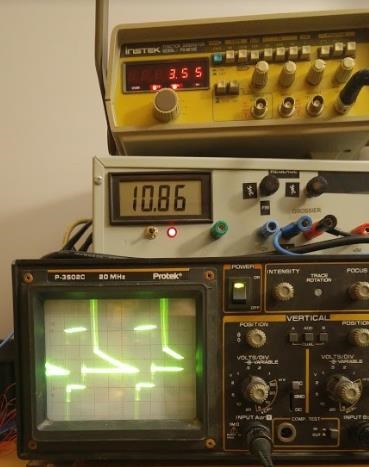
My first impression is this:
If I load more the L2 coil , the sawtooth is more apparent on the load input 2 scope.
The negative spike wave is the charging of L1 is about 0,4 volts on the loads probe. The positive square wave is the input from the signal generator. After that there is a peak positive of 3,5 volts across output.
I think the charging of L1 is very fast.

Here is the circuit;
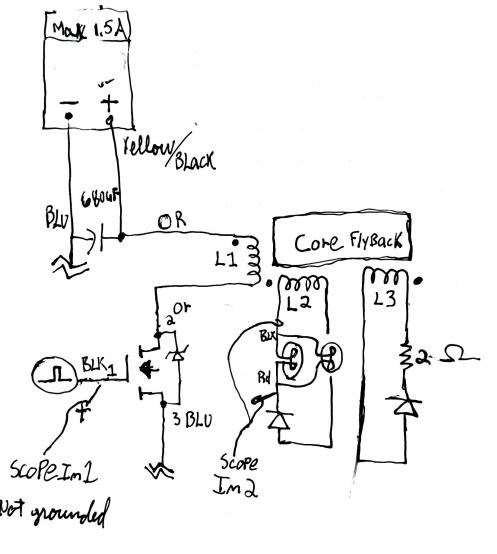
Any advice is appreciated
Thx everyone!
Change is never easy but it's worth inertia.
''Change is never easy but it's worth inertia''











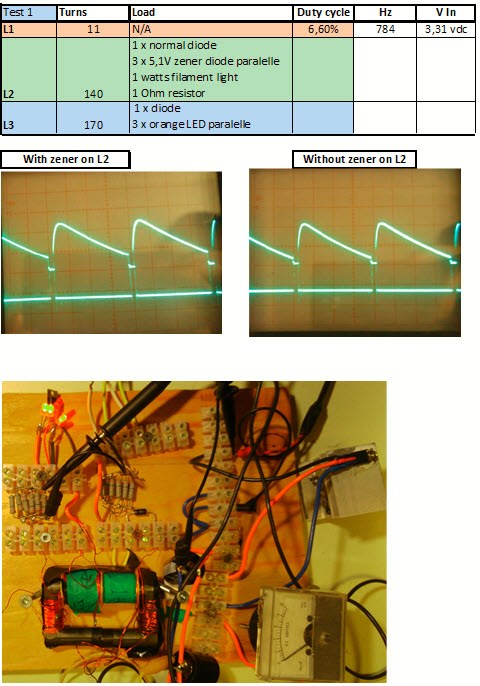






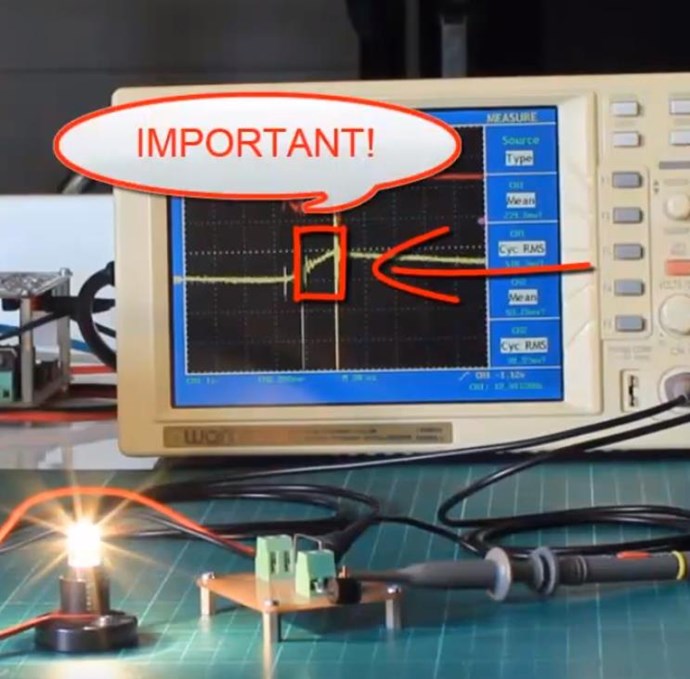
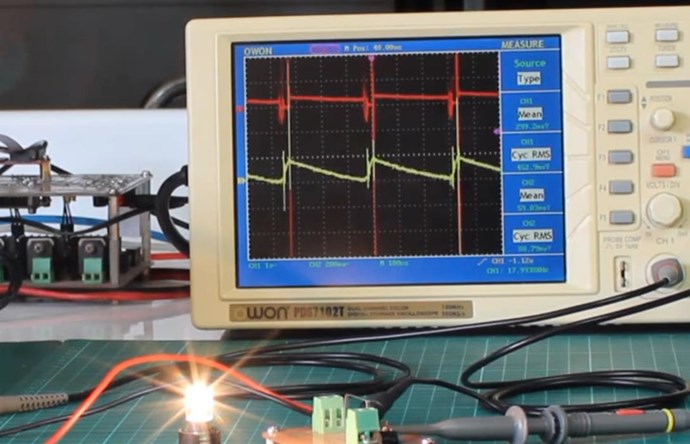

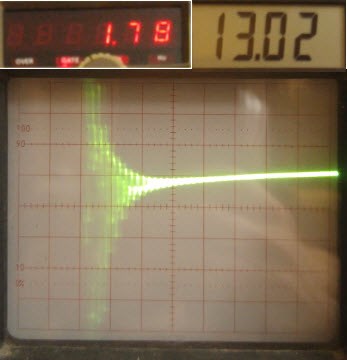




---open-tesla-research.jpg?width=20&crop=0,0,20,20)



